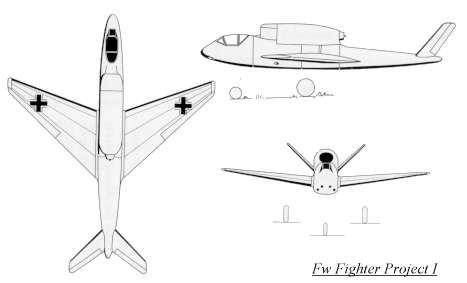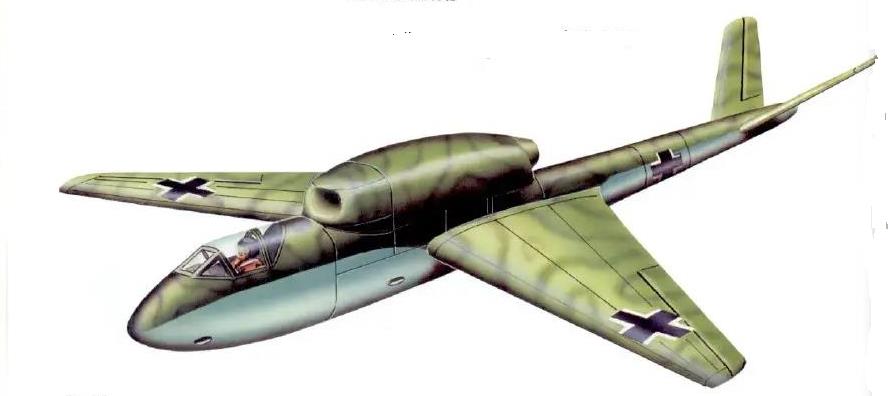
| Type | Single seat fighter |
| Engine | 1 Junkers Jumo 004 or 1 BMW 3302 (003) |
| Dimensions | Length 10,5 m , height , span 8,2 m , wing area 14,0 m2 , sweep 30º negative, aspect ratio 4,8:1, profile NACA 00012-1.130 with 12 % thickness ratio |
| Weights | Empty 1900 kg (BMW), loaded 3000 kg (BMW) 3350 kg (Jumo), max. take off weight |
| Performance | Max.. speed 930 km/h (Jumo 004) at 4500 m,800 km/h at 8000 m, cruising speed , range , endurance 45 min. at 6000 m , 90 min. at 12000 m, service ceiling 10800 m , climb 11 m/sec. with 150 % boost 21,7 m/sec. |
| Armament | 2 MK 108 30mm cannon and 2 MG 151 15mm machine guns |
